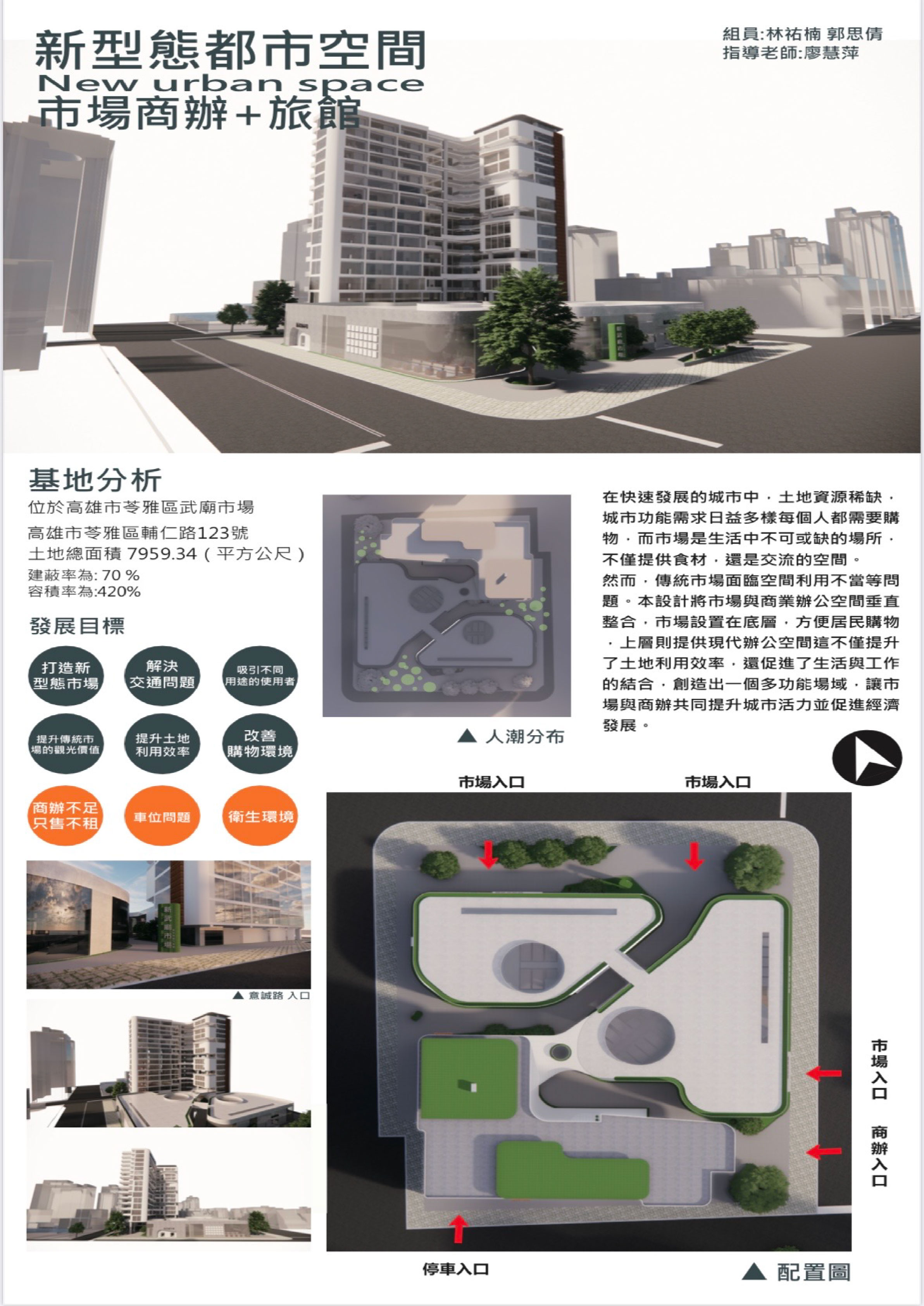
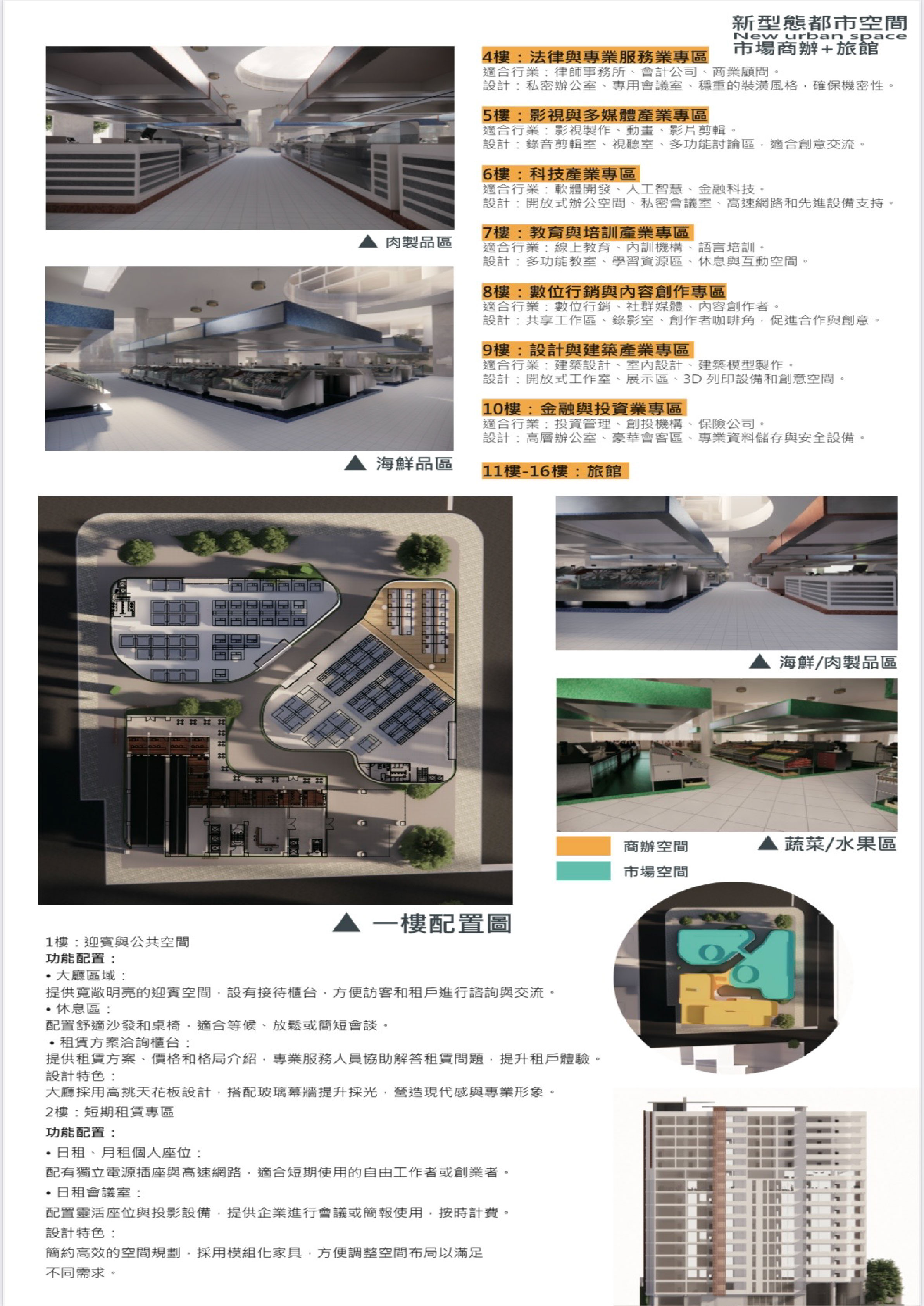
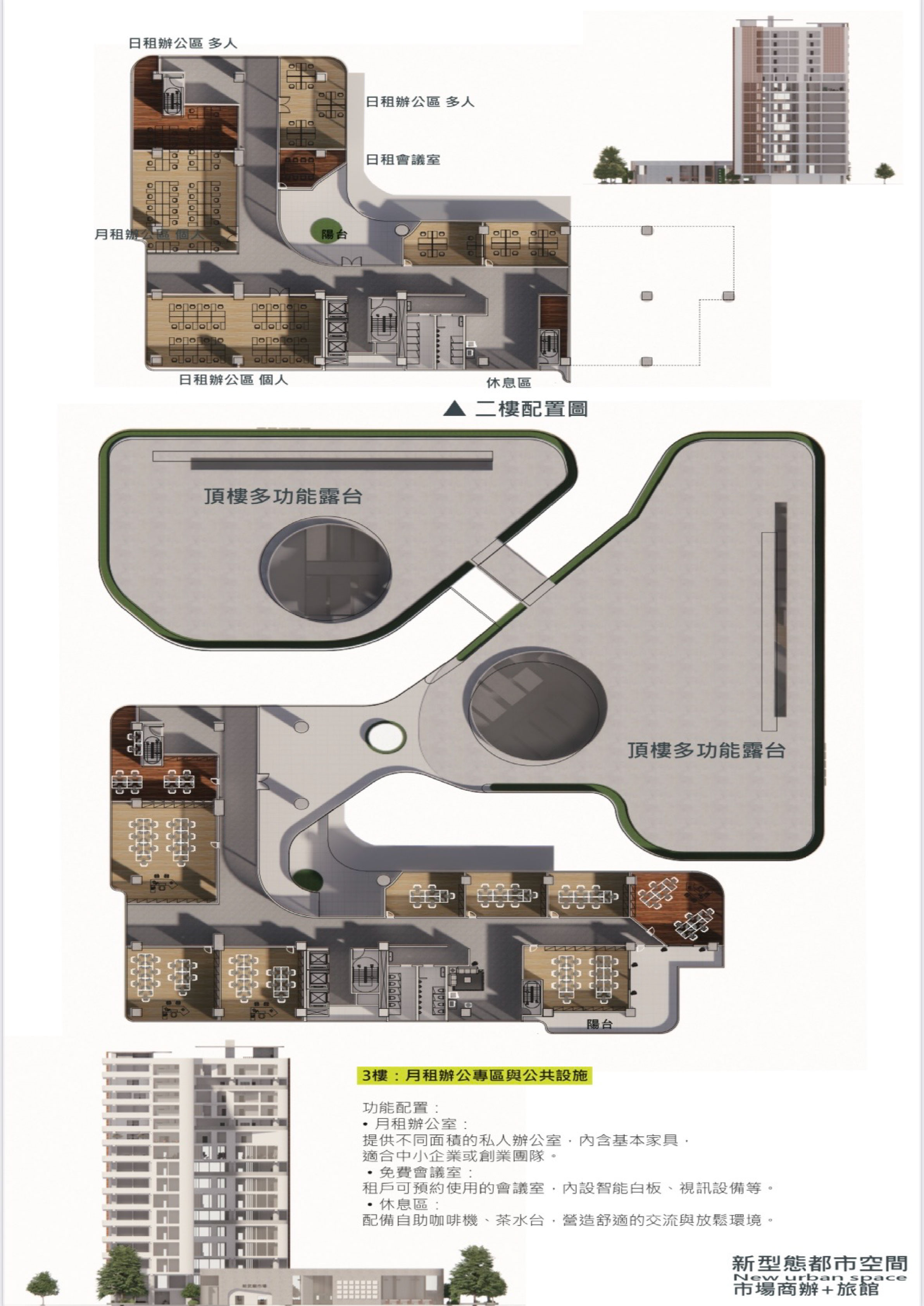
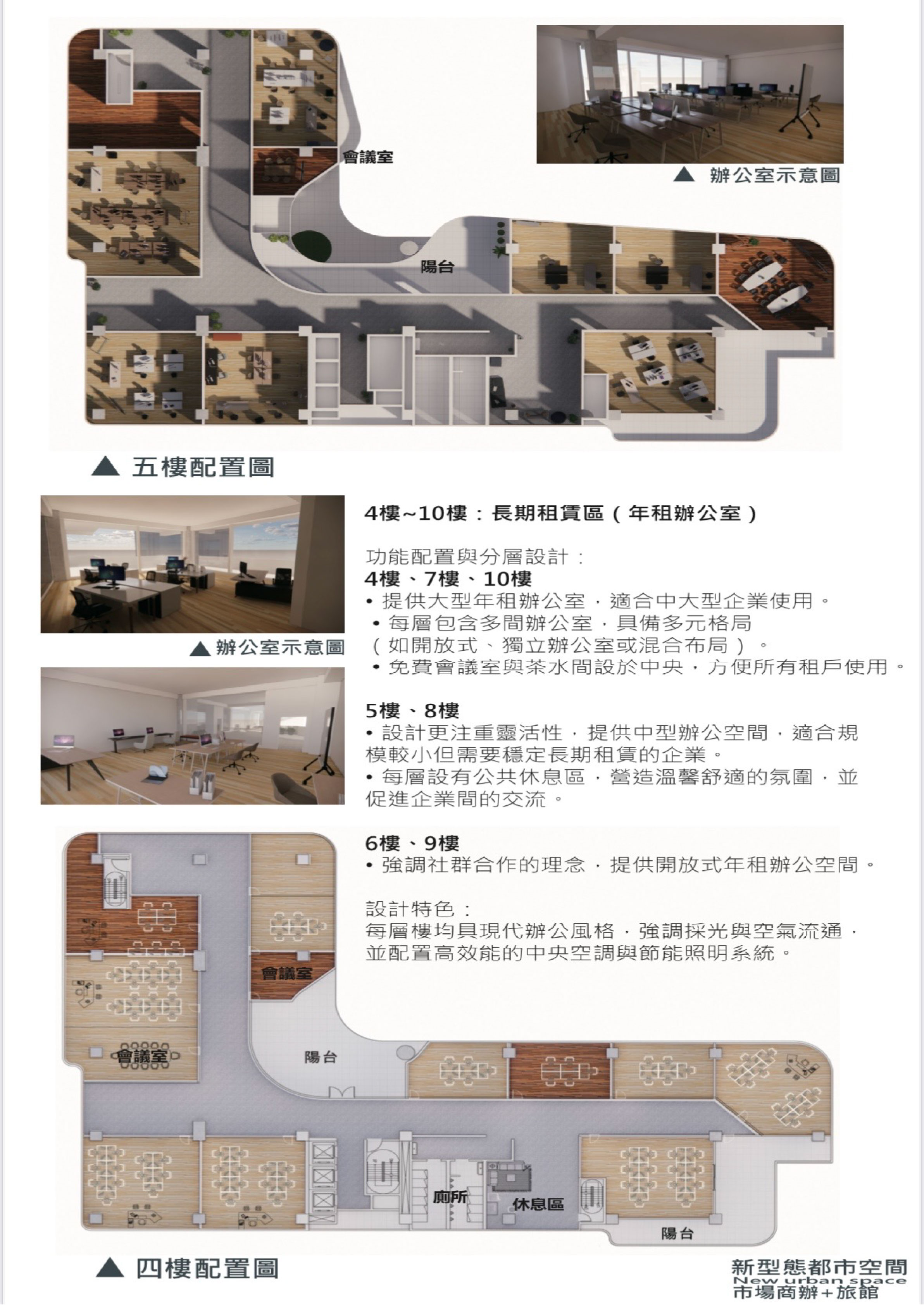

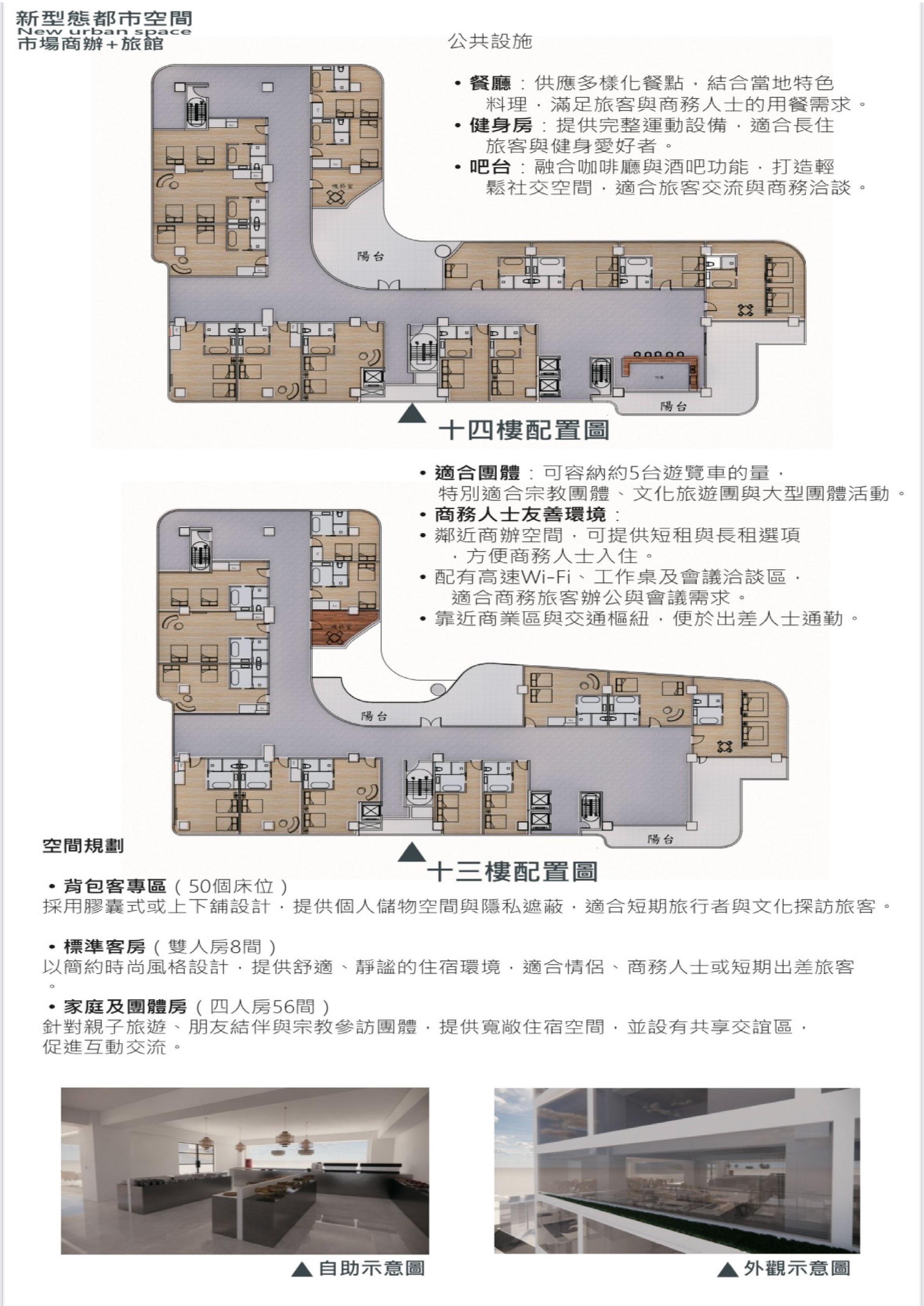
在快速發展的城市中,土地資源日益稀缺,而城市的功能需求則愈加多樣。市場作為生活中不可或缺的場所,不僅提供日常食材,更是社區交流的重要空間。然而,傳統市場往往因空間利用不當、環境雜亂、設施老舊等問題,難以適應現代城市發展的需求。因此,本設計將市場、商業辦公與旅館進行垂直整合,透過立體規劃提升土地使用效率。
市場被設置於建築底層,方便居民日常購物,並維持市場的開放性與流動性;上層則提供現代化辦公空間,滿足城市商業需求。此外,商辦空間中融入旅館設施,為短期出差或旅行的人們提供便利住宿,讓市場與旅館相互帶動人流與經濟效益。旅館不僅能服務商務人士,也能吸引對當地市場文化感興趣的旅客,進而形成獨特的都市體驗。
透過合理的空間規劃與現代建築技術,市場得以保持傳統市場的活力,同時擁有更佳的衛生環境與動線設計,使購物體驗更加舒適。本設計不僅解決市場的空間利用問題,還創造了一個兼具商業價值、旅遊體驗與社區活力的場域,促進城市經濟發展,並打造更宜居的都市環境。
In rapidly developing cities, land resources are becoming increasingly scarce, while urban functional demands continue to diversify. Markets are an essential part of daily life, not only providing fresh ingredients but also serving as vital spaces for community interaction. However, traditional markets often suffer from inefficient space utilization, disorganized environments, and outdated facilities, making them less adaptable to modern urban needs. This design integrates markets, commercial offices, and hotels into a vertical structure, enhancing land use efficiency through a multi-functional spatial approach.
The market is located on the lower levels, ensuring convenience for residents while maintaining an open and dynamic atmosphere. The upper floors house modern office spaces, catering to the city's business needs. Additionally, a hotel is incorporated within the commercial complex, providing convenient accommodations for business travelers and tourists. The integration of the market and hotel generates a unique urban experience, attracting visitors who are interested in local market culture while also benefiting from the synergy between commerce and tourism.
Through thoughtful spatial planning and modern architectural techniques, the market retains its traditional vibrancy while improving hygiene standards and circulation design, making the shopping experience more comfortable. This design not only addresses the challenges of market space utilization but also creates a dynamic environment that blends business, tourism, and community interaction, fostering urban economic growth and enhancing the overall livability of the city.